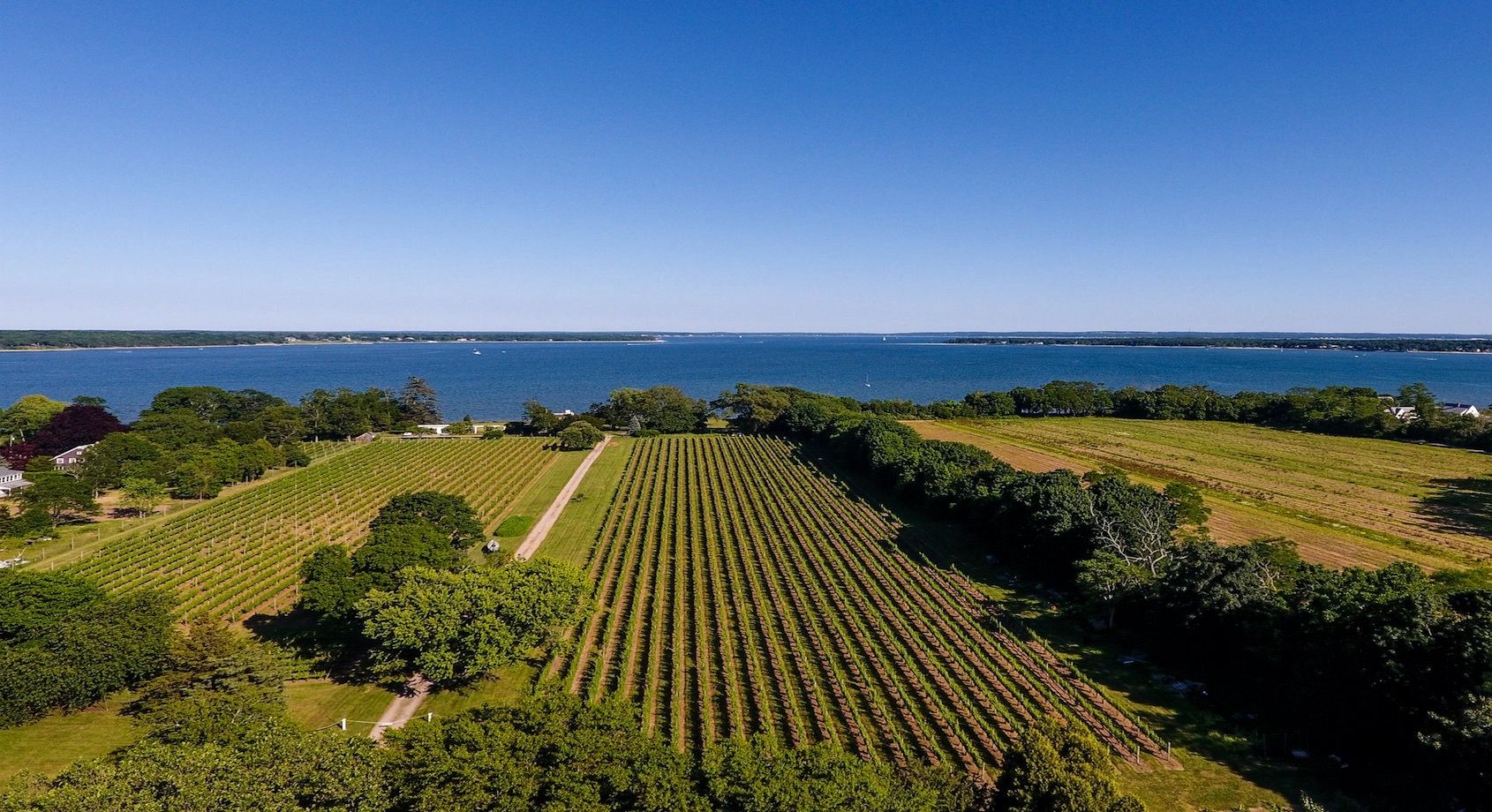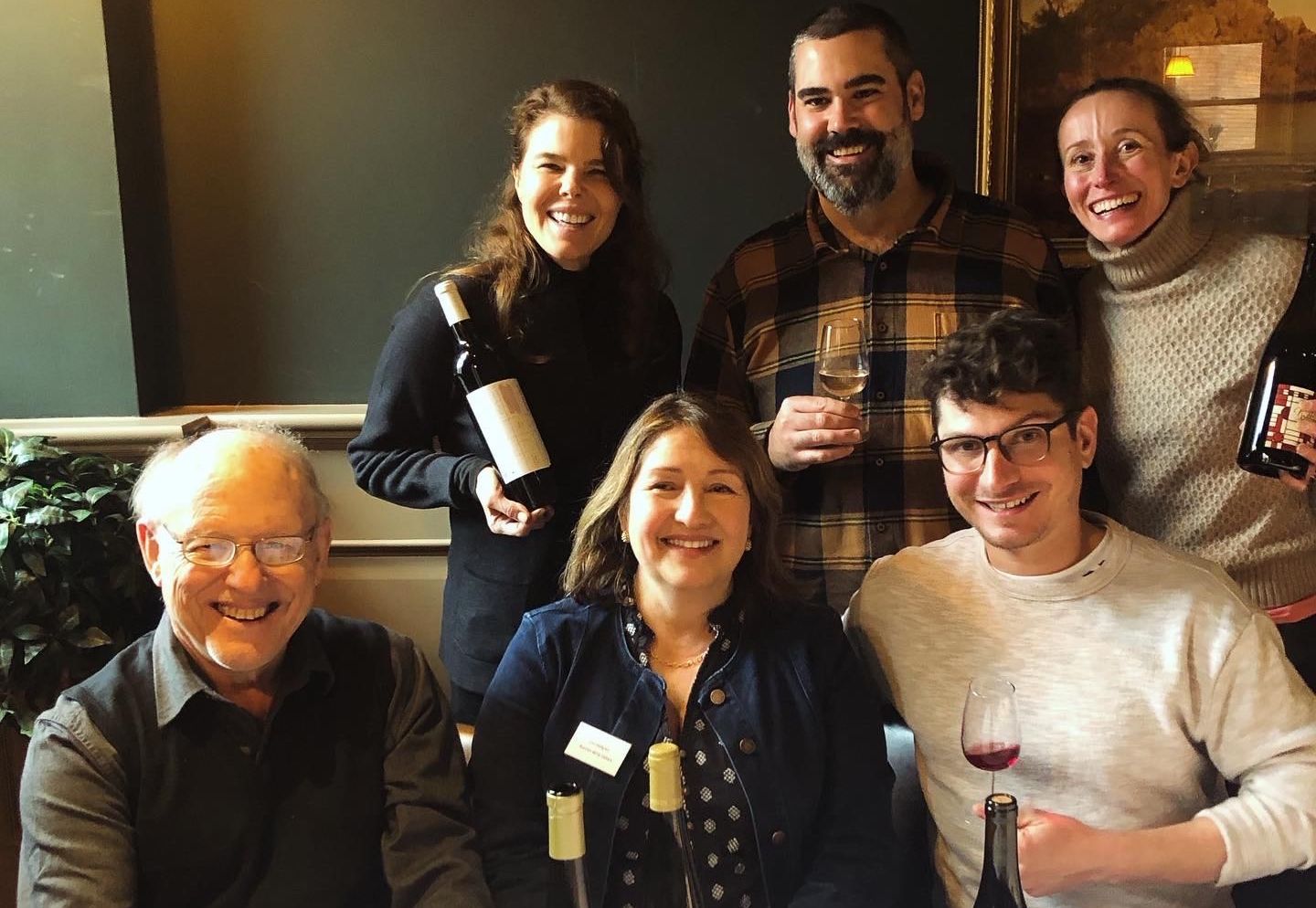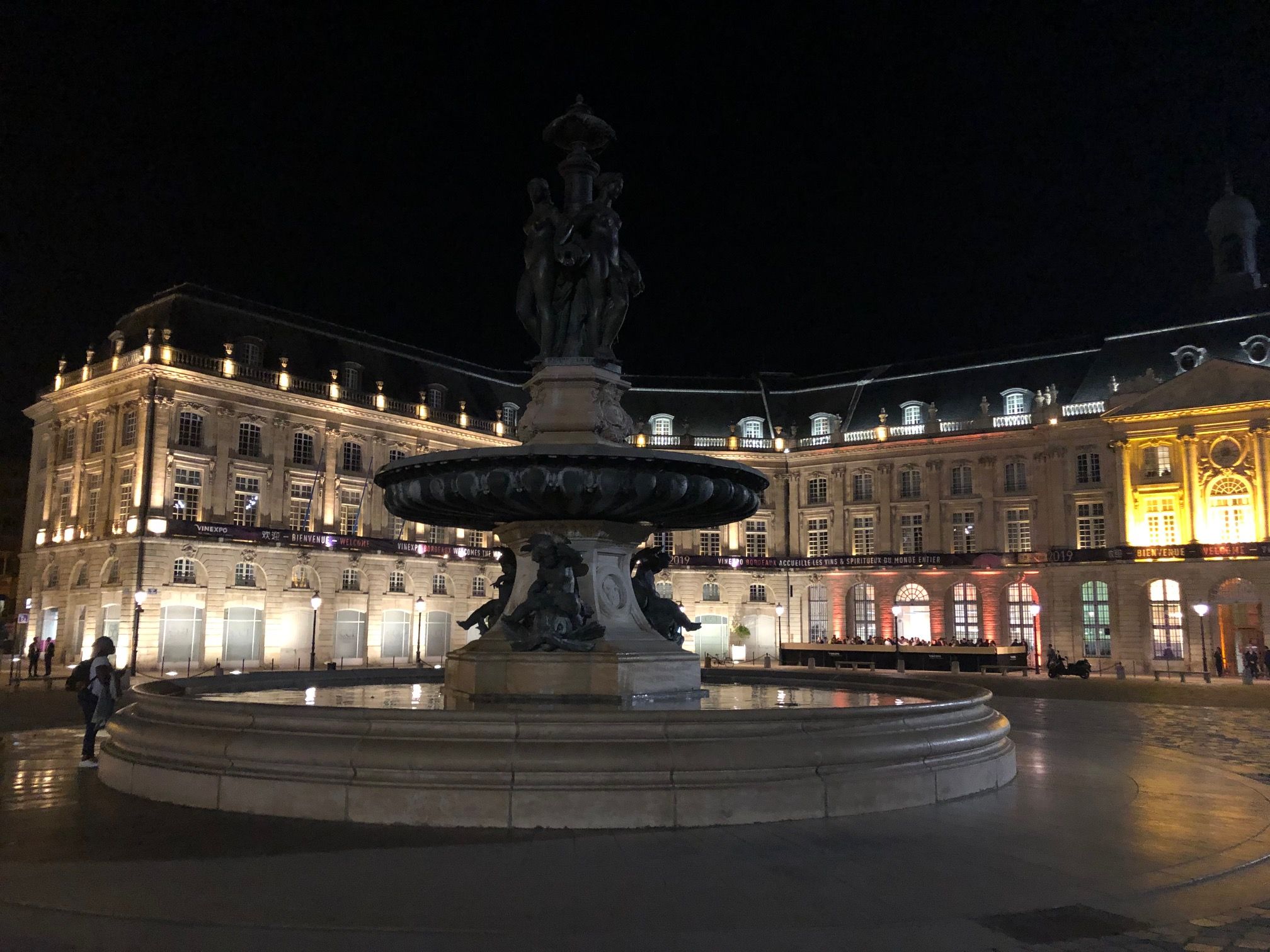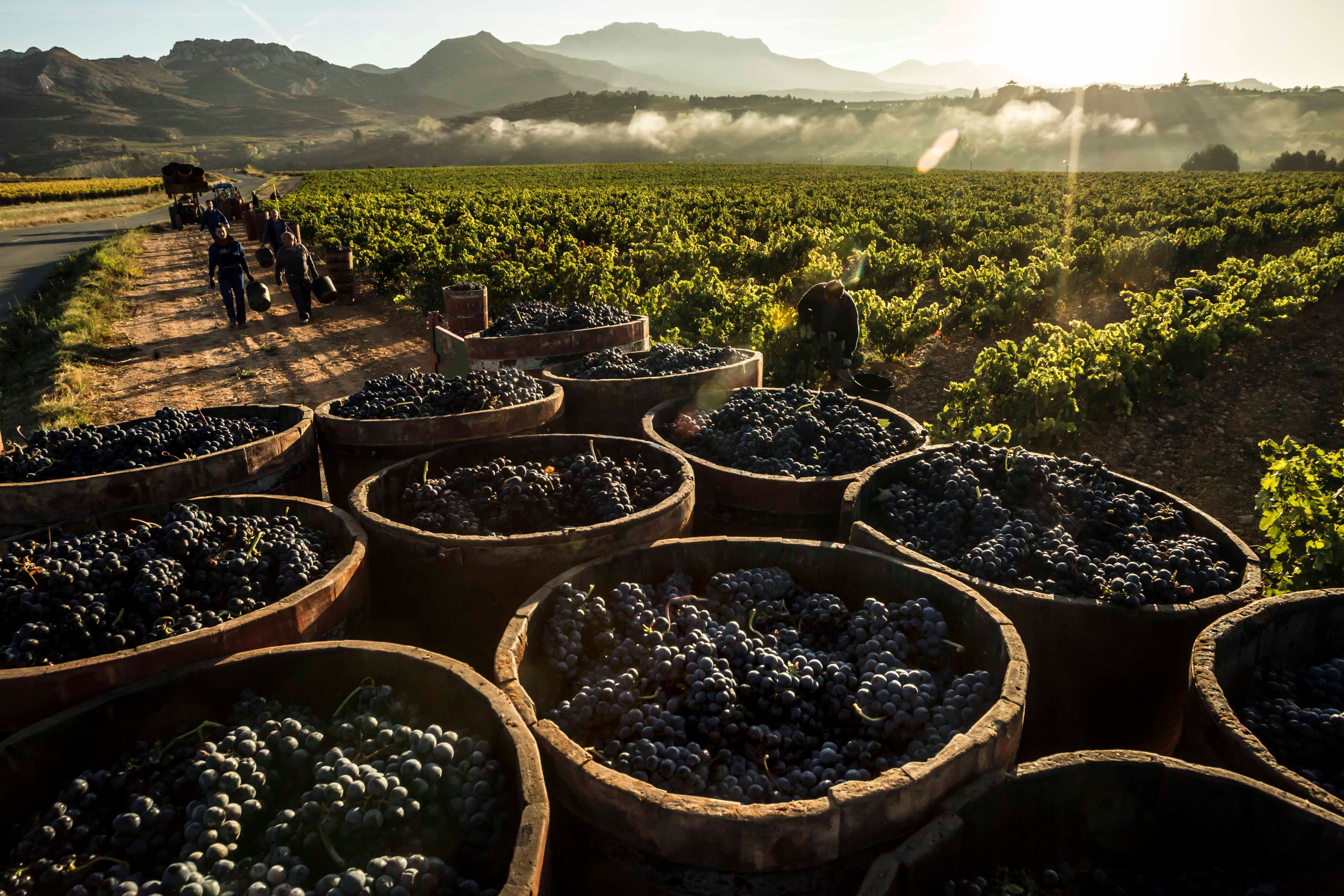New York State’s wine regions are little known outside the US, which, for Jamie Goode is a shame. Here he gives 10 reasons why…
1 A quick primer: The Finger Lakes

Finger Lakes from space – like a giant claw mark (Lake Ontario is at the top of the picture)
The largest wine region in New York State is the Finger Lakes, up-state not far from the Canadian border. It’s named after 11 glacial lakes that look like fingers from the air, although only four have vineyards around them. These provide a moderating effect, stopping it getting too cold in the winter, and then cooling things down in the summer. Then, at the end of the season, they act like radiators helping the vines finish their job of ripening the grapes. The lakes are only 12,000 years old, formed during the last glaciation event that occurred here. Seneca is the deepest and both it and Cayuga Lake have their own AVAs within the Finger Lakes AVA. Grapes are also grown around Canandaigua Lake.
Key challenges: winter low temperatures, which can kill vines, and then the disease pressure that comes from the humid summers. Advantages? Some interesting soils for growing wine grapes, and the ability to make precise wines with a cool-climate sensibility.
2 There’s a place here for hybrids and native grapes
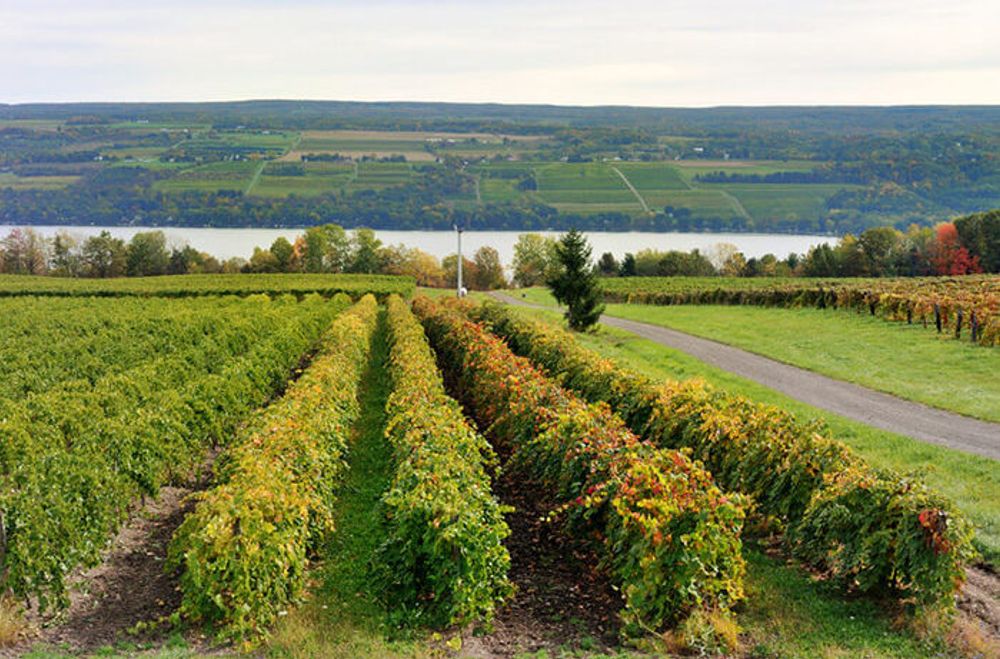
There are now 240 wineries in Finger Lakes with many more opening each year
While California has an ideal climate for Vitis vinifera – the species grape vine that gives rise to the varieties we know and love- it finds it tough to grow in the east. In the past, repeated attempts to transplant vinifera varieties from Europe to the eastern US failed, because of the challenging climate (hot, humid summers and freezing winters), and also because of the presence of phylloxera and diseases such as powdery and downy mildew. As a result, the early days of the wine industry here were dominated by chance crosses and hybrids of native American vine varieties.
You can still find them growing in the Finger Lakes – they make up 35% of the vineyard area – and while they’ve often been used to make lower priced wines, some people are trying to do more interesting things with them. Adapted to the local environment, they survive the winters easily and need less spraying. And the new generation of hybrids, such as Traminette and Vignoles, are especially promising.
3 The Finger Lakes used to be a big deal, but prohibition messed things up
As California’s wine industry took off in the 1870s, the Finger Lakes also began growing a substantial wine industry. In 1860, the Pleasant Valley Wine Company was founded in Hammondsport. By 1865 they were producing 20 000 bottles of ‘Great Western’ Champagne. Urbana Wine Company was founded in 1865 and traded as Gold Seal Vineyards. By 1870 they were making 120,000 bottles of Champagne and 50,000 bottles of still wine.
By 1890 there were 24,000 acres of vineyards in the Finger Lakes, mostly on Keuka Lake. The big speed bump for the Finger Lakes was prohibition in 1919. For the next 14 years, the vineyard area in California actually doubled as demand for grapes for home winemaking increased, many of which travelled by train to the east. When prohibition was repealed in 1933 each state was given its own powers to pass their own laws on the control of alcohol.
In California, the legislative attitude towards wine was much more favourable than in New York.
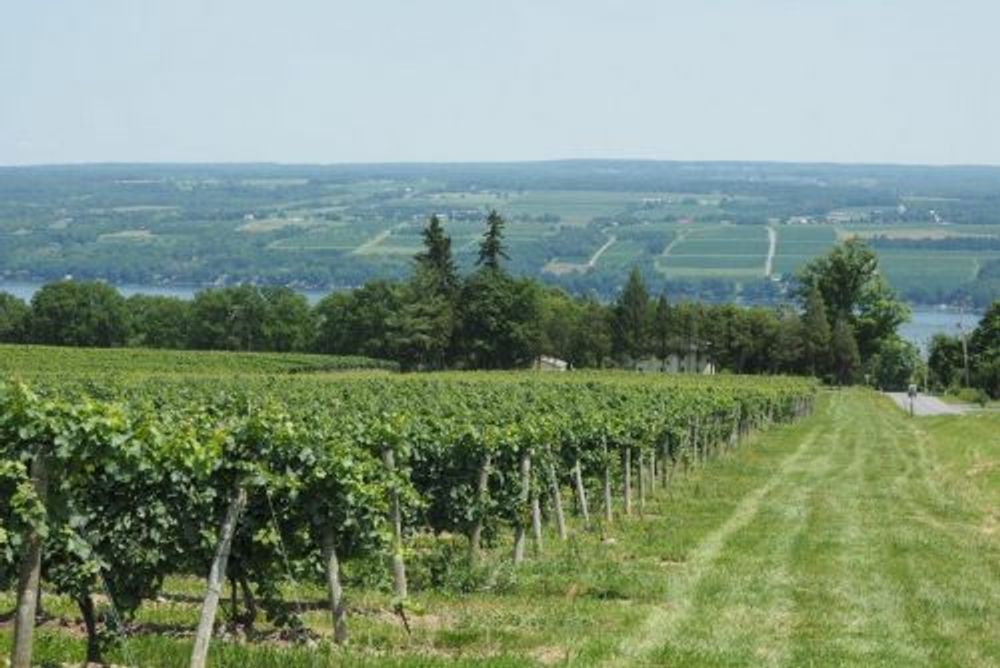
Glenora Wine Cellars has emerged as one of the region’s key wineries. Picture Jamie Goode
“Prohibition set the New York wine industry on its heels,” says Gene Pierce, owner of Finger Lakes winery Glenora Cellars. ‘When prohibition ended the federal government gave the states the right to choose their own regulation. California was very liberal, but New York was extremely restrictive: you still can’t sell wine in grocery stores.”
4 Finger Lakes hero (1) Philip Wagner
Philip Wagner was a journalist with an interest in winemaking, he moved to Europe with his job in the 1940s and there discovered reference to the French hybrids, known as hybrids producteurs directes (HPDs). Back in the late 19th century phylloxera ravaged the world’s vineyards, beginning in France. Before the solution of grafting onto American vines was discovered, attempts were made to breed the endangered vinifera varieties with American vines, but few of these ended up being widely used.
On Wagner’s return to the US he found that many were already in vine collections in the country, and so he began a nursery, and ended up championing their use in the state. These new hybrids made some very nice wines, and include among their number Rougeon, Marechal Foch and Seyval Blanc.
5 Finger Lakes Hero (2) Dr Frank
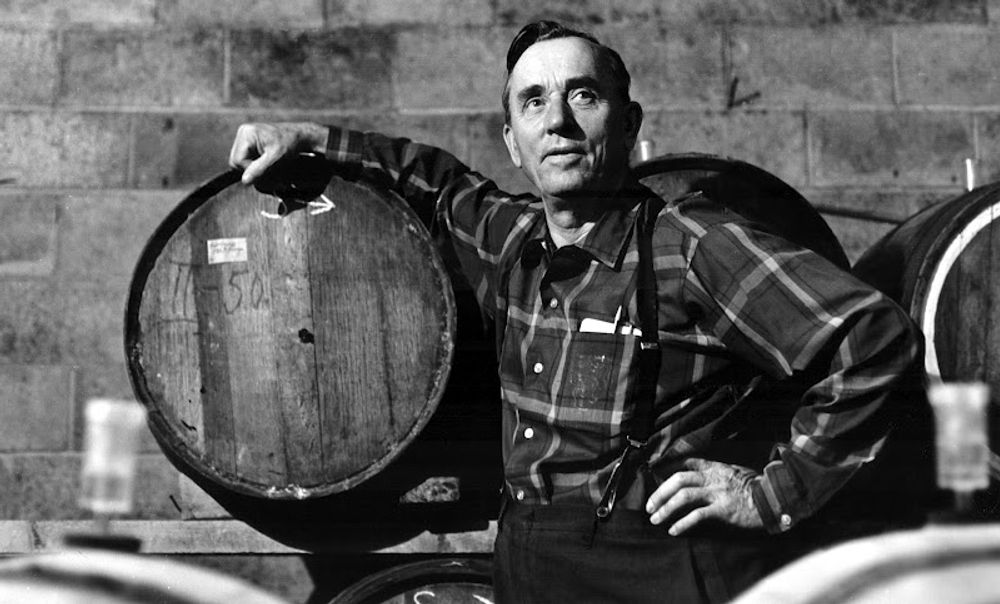
Dr Konstantin Frank was a key figure in introducing Vitis vinifera varieties in the Finger Lakes
Dr Konstantin Frank first really pushed the cause of Vitis vinifera varieties in the Finger Lakes, and his story is a good one. Born in 1899 into an ethnic German family in Ukraine, Frank became a noted agricultural engineer, eventually earning a PhD. Frank got a job renovating and managing a huge state-owned vineyard. He replanted it with grafted vinifera vines, and famously developed a special plough to earth over the vines for the winter – winter cold was one of the viticultural challenges here.
After the Second World War, Frank and his family managed to find their way to an American-occupied area. Eventually, they resettled in New York. As soon as he could earn enough money, Frank headed to the Finger Lakes, where he attempted to get a job more suited to his professional skills. The problem was that although he spoke a number of languages, English wasn’t one of them and he could only find low level agricultural work. But he was fortunate to meet Charles Fournier of the Urbana Wine Company. Fournier himself had an interesting background: he came to the US in 1934 after being headhunted from his role as winemaker with Veuve Clicquot.
The partnership between Frank and Fournier was to prove pivotal in introducing vinifera into the region. Frank left Urbana in 1962 (some accounts say he was fired, others say he had had enough) and began his own vinifera-only winery, which is now one of the leading producers in the region.
6 The 1976 farm winery act created the Finger Lakes wine scene as it is today
The most significant factor in the development of the Finger Lakes wine region as it is today was the Farm Winery Act, passed in June 1976, and it was in response to a crisis. The large wine companies relied on a network of growers. In 1974 and 1975 there were two large harvests, and because the major companies were buying in around a quarter of their needs from California (wine, to blend in with their own), a surplus began to develop.

Swedish Hill is typical of New York State wineries that started making their own wines rather than just sell their grapes to bigger players
The big companies reneged on their growing contracts. A typical story would be the one told by Dave Peterson, winemaker at Swedish Hill in the Finger Lakes. They grew for Taylor Wines, and then in the 1970s with their demise these grapes had no home. A lot of the industry at the time was growing native and the lesser hybrid varieties.
“Decisions were made in a peculiar way as to how hybrids were selected,” says winemaker Peterson. “Aurora was the biggest hybrid here, chosen for Taylor Wines by picking date: it came in before the other grapes.”
But it wasn’t easy for growers to start their own wineries. The cost of a winery licence was prohibitively expensive, at $1,600 a year, putting off farmers from making wine themselves. The 1976 Act changed this, and slashed the cost to just $125 a year, making it feasible for smaller operations to begin making and selling wine.
Companies such as Swedish Hill ended up making wines out of what they had in the vineyard. “Seasoned as growers we didn’t know how to make and market wine. You were dealt a short deck of cards, working in some cases with inferior grapes and most growers were financially stressed, putting wineries in,” says Paterson.
So unlike regions such as Napa, it wasn’t lawyers and doctors who were building wineries, but farmers. There were 19 bonded wineries in New York in 1975, and this number rose to 100 in 1985, and currently sits at around 420.
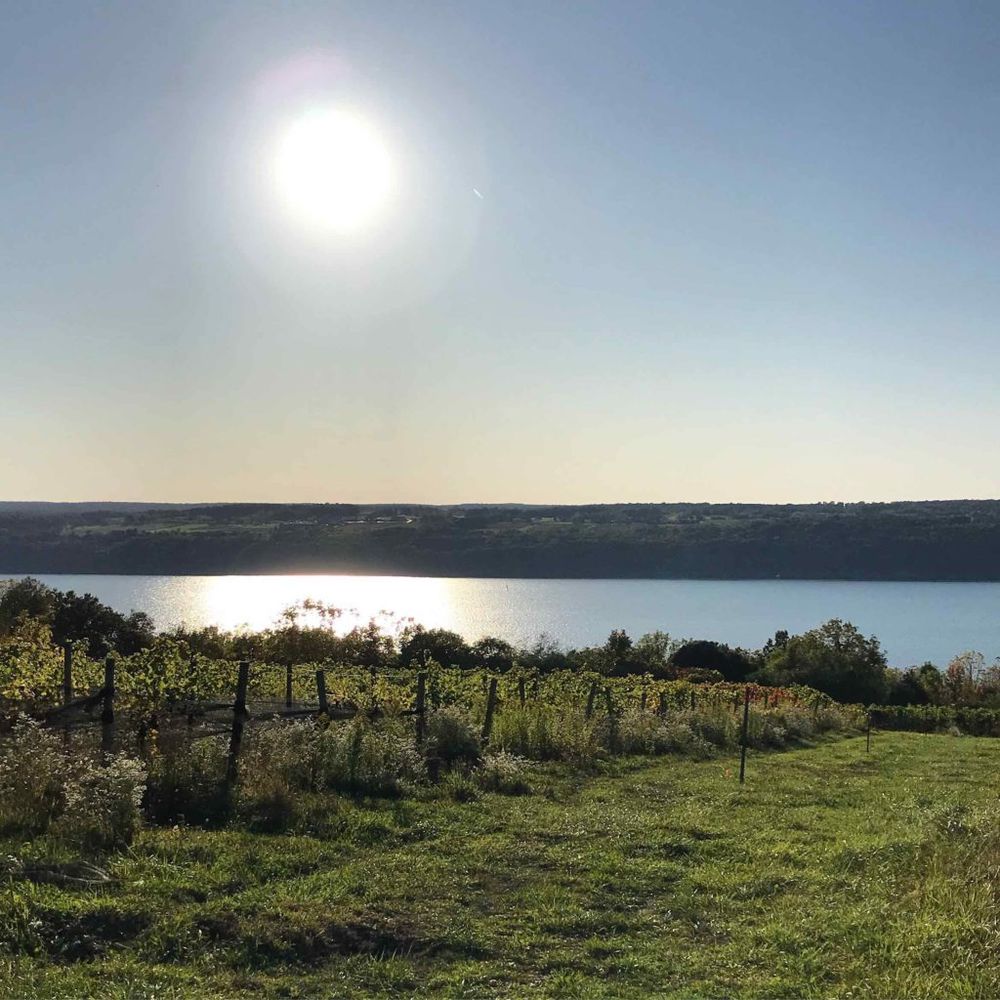
The lakes of New York State are not only beautiful to look at but have such an influence on the styles of wine being made
7 Riesling is king
Finger Lakes is now making its reputation for its star grape, Riesling. Of the reds, Cabernet Franc is strong, and Pinot Noir can be good. Chardonnay is a little up and down, but Blaufrankisch (which many call Lemberger, the German name) does pretty well. There’s also some interesting Gewurztraminer, and oddities like Rkatsitelli and Saperavi.
While many of the hybrids and native grapes are used to make inexpensive, sweet wines for the tourist trade, some people are taking them more seriously, and results can be very interesting. “The region is still growing,” says Gene Pierce of Glenora. “We’re still seeing people becoming involved. There are planting, especially more specialized plantings, involving vinifera.”
8 Is sparkling wine the future of Finger Lakes?

Nathan Kendall is looking to shake things up in New York state with his own range of Pet Nat-style wines
Nathan Kendall is one of the bright lights of the Finger Lakes wine scene. He’s winemaker at Hickory Hollow winery, but also makes wine under his own name. And he’s also involved in a new project with Pascaline Lepeltier, the famed New York Sommelier, making a Pet Nat called Chëpika. There are two wines in the range, one a Catawba, and the other a Delaware. These were two of the earliest-adopted hybrids in the region.
Why did he choose to use them? “For me, it was more of a kind of historical thing,” says Kendall. “That is what our region is founded on: Catawba goes back to the 1820s. Back in the 1860s we were making lots of sparkling wine based on these varieties. Winemakers were coming from Champagne to make wines with them, and we won awards in Paris.”
Kendall is also working on traditional method sparkling, something that many in the region are beginning to focus on. Both Weimer and Frank, two of the leading wineries in the region, have sparkling projects. Dr Konstantin Frank makes six different sparkling wines. “Sparkling is the next thing for this region” says Fred Frank, grandson of Konstantin, who now runs the winery. “Our juice chemistry off the press is almost identical to Champagne juice. Our climate is the closest to Champagne in the US.”
9 Finger Lakes hit list
Wineries to watch out for: Forge, Element, Red Newt, Hermann J Wiemer, Ravines, Fox Run, Anthony Road, Dr Konstantin Frank, Nathan Kendall, Tierce (a collaborative Riesling project), Bellangelo, Osmote, Silver Thread, Bloomer Creek.
10 Long Island, the newcomer
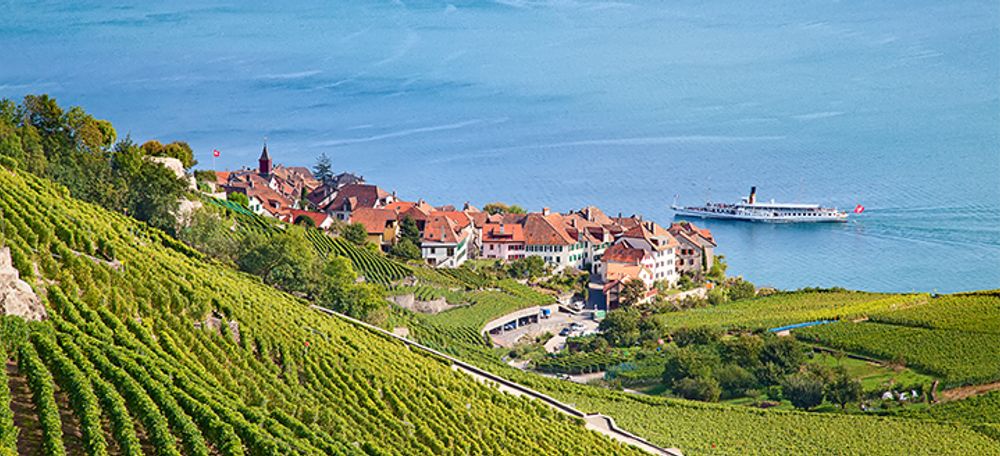
Long Island now has close to 60 wineries and continues to attract more interest
Long Island juts out east from New York City, surrounded by the Long Island Sound on one side and then the Atlantic to the south. At the end, it forms two forks, with the north fork having the greater concentration of wineries, although there are a couple of notable ones on the south. It has been an agricultural area since the 1700s and the proximity of the water moderates the climate.
It’s cooler here than the city in the summer, and in the winter it’s warmer, so there’s no problem with vine-damaging cold winters here. The other advantage of the climate is that it stays warmer for longer in the autumn, helping with the last stages of ripening. The first vines were planted here in the 1970s.
The growth in vineyards here experienced a spurt in the late 1990s. In 1995 there were 1,200 acres, and then by 2000 there were 2,600 acres under vine.
One of the reasons for this was that a change in licencing meant that ‘Landlord’ wineries could have ‘Tenant’ wineries working under their licence. This change, in 1988, made it much easier for small wineries to make the sums work by doing custom crush.
Currently, Long Island has 3,000 acres of vines, with 58 wineries. All of the vineyards are planted with Vitis vinifera varieties, except for 10 acres of Cayuga and a small amount of Vignoles. Merlot is the most widely planted variety, followed by Chardonnay and Cabernet Franc. The combination of silt loam and sand means that the soils are very free draining, and irrigation is needed on the north fork vineyards because the vines can experience drought stress between the relatively frequent rain events.
Wineries to watch out for from Long Island include Wölffer Estate (impressive across the range, but a rosé specialist, too), Channing Daughters (wide range including some exotic varieties, but also especially good Pet Nats), Paumanok (impressive Chenin and Chardonnay, and reds from Bordeaux varieties), Palmer (now owned by Paumanok) and Red Hook (urban winery in Brooklyn making really good Long Island wines, as well as others).
- You can read more from Jamie Goode on his award winning website – Wine Anorak.
